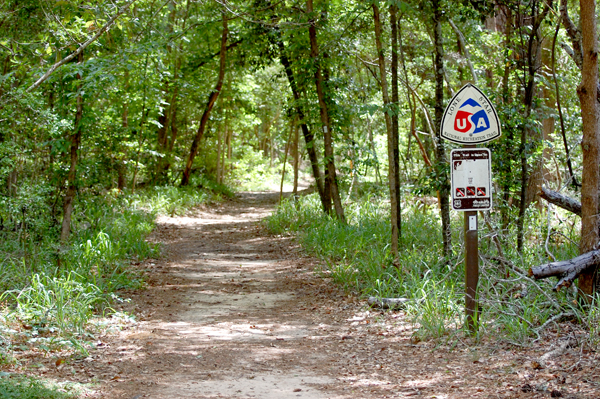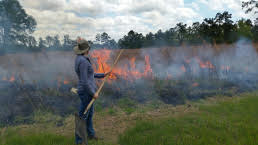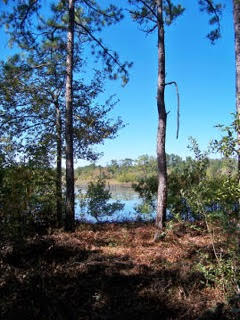
Photo: U.S. Forest Service
This article is one of several that will be written over the four year planning period for the revision of the National Forests and Grasslands in Texas (NFGT) plan for the Angelina, Sabine, Davy Crockett, and Sam Houston National Forests and the LBJ and Caddo National Grasslands. The planning process includes three phases: assessment, plan development, amendment, or revision, and monitoring. This article talks about the first phase of the planning process, assessment.
According to the National Forest System Land Management Planning regulation (36 CFR Part 219), the definition of “assessment” is “the identification and evaluation of existing information to support land management planning. Assessments are not decision-making documents, but provide current information on select topics relevant to the plan area, in the context of the broader landscape.”
Now that we know what an assessment is, what does it include? Again, according to the planning regulation, assessments “rapidly evaluate existing information about relevant ecological, economic, and social conditions, trends, and sustainability and their relationship to the land management plan within the context of the broader landscape. The responsible official [in our case, the Forest Supervisor of the NFGT] shall consider and evaluate existing and possible future conditions and trends of the plan area, and assess the sustainability of social, economic, and ecological systems within the plan area in the context of the broader landscape.”
What does that mean?
It means if you are a NFGT user or visitor and you have information about what is happening, what has changed, what trends you see for any ecological, economic, and social factor or the sustainability of those factors, then you have important and valuable information to provide to the Forest Supervisor during the assessment phase.
What does “in the context of the broader landscape” mean?
Each of the national forests and national grasslands has a surrounding landscape of developed and undeveloped lands, which affects their management, just as the national forests and national grasslands affect these surrounding lands. To manage the national forests and national grasslands, the Forest Supervisor must know what is needed for management and how this management is affected by nearby land uses (the landscape).

Photo: Marysee Prairie prescribed burn (Jennifer Walker)
For instance, prescribed burning is important to manage for the federally endangered Red-cockaded Woodpecker. However, as land use becomes more developed, urban prescribed burning becomes more of a challenge due to the impact that fire has on air pollution, people's health, and smoke drifting across roads. The plan must address these concerns of the “broader landscape” so that the Red-cockaded Woodpecker can be managed and protected.
The Forest Supervisor will identify and consider information found in governmental or non-governmental assessments, plans, monitoring reports, studies, and other information. Local knowledge (that is what you and I know) will be considered if publicly available or voluntarily provided. So you have an avenue to provide information to the Forest Supervisor to consider when preparing the assessment.
The Forest Supervisor is required to coordinate and provide opportunities for the public to provide existing information for the assessment. The assessment report must document how the “best scientific information” was used. Some of the information that the Forest Supervisor will particularly look at includes:
- Terrestrial/aquatic ecosystems (the living/non-living elements of a landscape) and watersheds
- Ecosystem drivers (which push the development and functioning of ecosystems) including dominant ecological processes, disturbance regimes, and stressors (like natural succession, wild land fire, invasive species, climate change, etc.) and the ability of terrestrial/aquatic ecosystems to adapt to change
- Baseline assessment of carbon stocks
- Threatened/endangered/proposed/candidate/potential species of conservation concern
- Social/cultural/economic conditions
- Benefits people obtain from the National Forest/National Grasslan planning area
- Air/soil/water resources and quality
- Multiple uses and their contributions to local/regional/national economies
- Recreation settings/opportunities/access and scenic character
- Renewable and non-renewable energy/mineral resources
- Infrastructure like recreational facilities and transportation and utility corridors
- Areas of tribal importance
- Cultural/historic resources and uses
- Land status and ownership/use/access patterns
- Existing designated areas located in the plan area (like wilderness, wild and scenic rivers, scenic areas, etc.) and the potential need and opportunity for additional designated areas
A public notice will be prepared and released that the assessment is beginning in the Federal Register, newspaper of record, and online. It is up to the Forest Supervisor to determine what opportunities the public will have to provide existing information for the assessment.
The Forest Supervisor should use traditional and non-traditional sources of information including user generated content and reach out to a variety of communities to obtain their perspective on social, economic, and cultural needs and values and ecological sustainability and plant and animal communities.
The intent of public participation in the assessment phase is to provide opportunities for the public to share its knowledge of existing forest conditions and identify concerns about trends and perceptions of risk to social, economic, and ecological systems. The interdisciplinary team that prepares the assessment must provide the following opportunities for public participation:
- At the start of the assessment, tell the public about the scope and scale of the assessment and encourage participants to share their knowledge of existing forest conditions.
- During preparation of the assessment, receive public input on specific elements of the assessment.
- Make the draft assessment report available for public review and feedback.
- Public participation opportunities must also be assessed for potential list of species of conservation concern; geographic extent of the influence of social, and economic contributions of the planning area on the surrounding communities and the broader landscape; and wilderness or wild and scenic river inventories initiated during the assessment process.
The Sierra Club welcomes people who love National Forests and Grasslands and want to get involved. If you want more information please contact Brandt Mannchen at 713-664-5962 or brandtshnfbt@juno.com.
Our NFGT are too important not to speak up for wildlife, wilderness, water, landscapes, plants, and compatible recreation. See you in the forest!
Brandt Mannchen is Chair of the Forestry Subcommittee for the Houston Regional Group and Chair of the Lone Star Chapter Forest Management Issue Committee.

Photo: Pines in the Big Thicket (Nicida Maerefat)